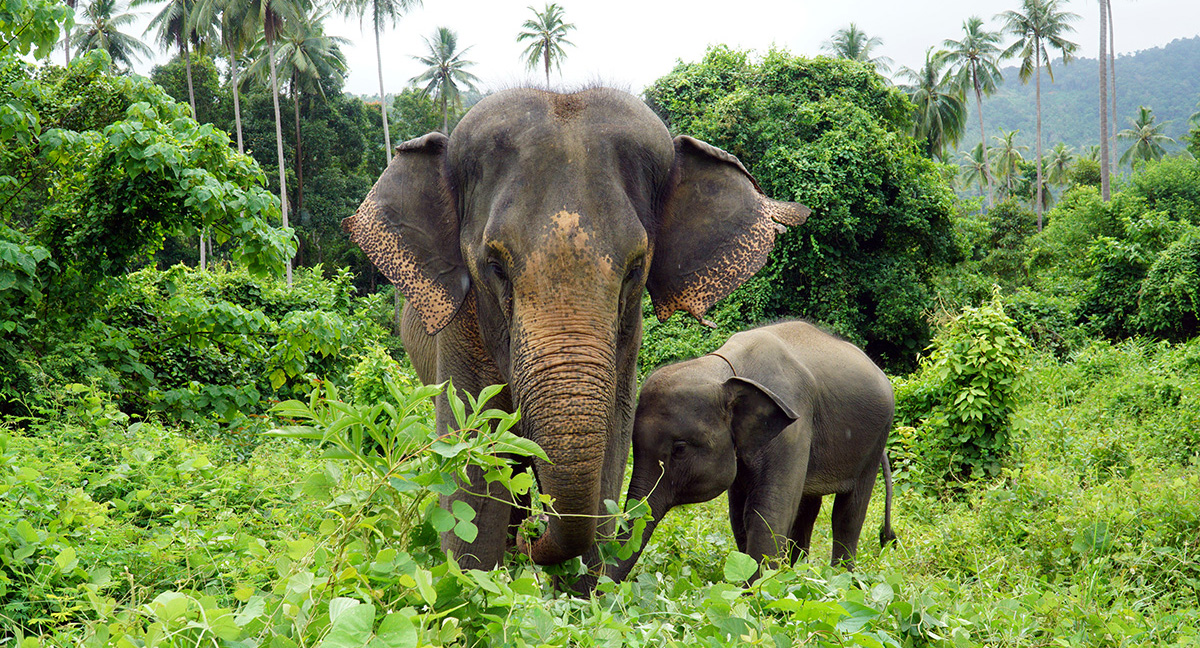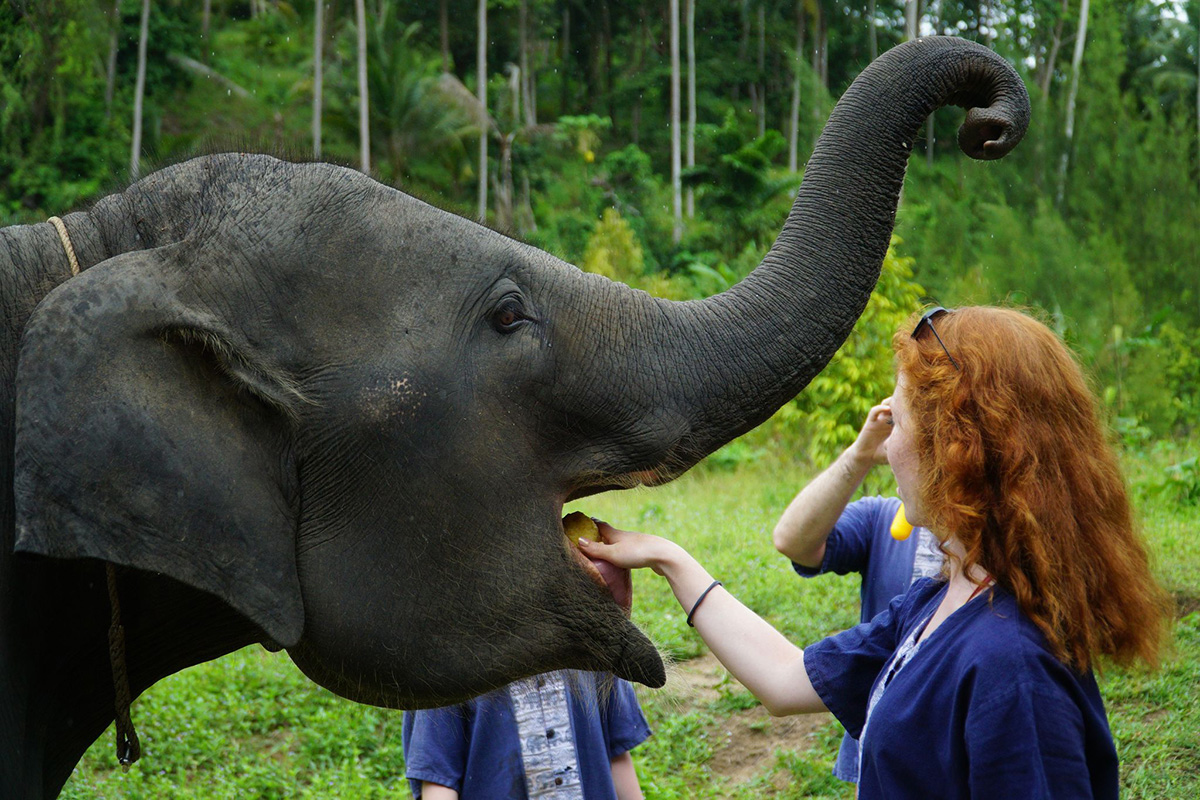About the Elephants

Elephant, the largest existing land animals, a heavy plant-eating mammal with a prehensile trunk, long curved ivory tusks, and large ears, native to Africa and southern Asia. It is the largest living land animal.
In general, the Asian elephant is smaller than the African bush elephant and has the highest body point on the head. The back is convex or level. The ears are small with dorsal borders folded laterally. It has up to 20 pairs of ribs and 34 caudal vertebrae. The feet have more nail-like structures than those of African elephants: five on each forefoot, and four on each hind foot.
- Length: Asian elephant: 5.5 – African bush elephant: 6.5 m
- Mass: African bush elephant: 6,000 kg, Asian elephant: 5,400 kg, African forest elephant: 2,700 kg
- Lifespan: African bush elephant: 60 – 70 years, Asian elephant: 48 years, African forest elephant: 60 – 70 years
- Height: African bush elephant: 3.3 m, Asian elephant: 2.7 m
- Gestation period: African bush elephant: 22 months, Asian elephant: 18 – 22 months
Elephant Food:
Elephants consume grasses, small plants, bushes, fruit, twigs, tree bark, and roots. Nearly 80% of an elephant's day is spent feeding. Tree bark is a favorite food source for elephants. It contains calcium and roughage, which aids digestion.
Asian elephants are herbivores and will consume about 200 to 300 kilos of food per day and 150 liters of water. Elephants may be heavy animals, but they can run up to 15 miles per hour.

Elephant Anatomy:
Trunk:
One of the most interesting features of an elephant is its trunk. An elephant’s trunk is both an upper lip and an extension of the nose with two nostrils running through the whole length. The trunk has more than 40,000 muscles in it which is more than a human has in their whole body.
This is an elephant’s most useful body part! A trunk is an elongation of the nose and upper lip. Elephants use their trunks to:
- smell
- bring water to their mouths to drink
- store water to drink later
- dig holes
- spray water over their bodies to bathe
- breathe air (like a snorkel) when swimming
- pick up branches, plant leaves, fruits, and other foods to eat
- knock over trees (trunks are very muscular and powerful!)
- greet other elephants (touch trunks!)
- help move baby elephants, especially if they get stuck in the mud
- toss dirt and mud onto their backs to protect against the sun and insects
- make sounds, like loud trumpet calls
- playfully wrestle or fight with each other
Ears:
Elephant ears are very thin, full of blood vessels and important to help keep elephants cool. They are specialized to hear very low sounds.
Lips:
Elephants use their lips to hold onto plants while eating.
Tusks:
Tusks are teeth that stick out from the elephant’s mouth. They are made of a special material called ivory. Elephants use tusks to:
- dig in the ground for water, minerals, and roots
- crack open hard-shelled fruits
- peel bark off trees to eat or to mark territories
- fight
Feet:
Elephant feet must be large and strong to support the weight of the elephant’s body.
Tail:
Elephants have long tails ending in tufts of hair which they swing back and forth to
swat away irritating insects.
Skin:
Elephant skin is especially thick and tough. To protect their skin, elephants cover their bodies with dust or mud to act as sunscreen and insect repellent. They also spray water over their bodies to keep their skin from drying out.
Eyes:
Elephant eyesight is generally poor, and may be best in dim light.
Teeth:
Instead of losing baby teeth one at a time like humans, elephant teeth move from the back of the mouth, like a conveyor belt, to push out and replace front teeth. Elephant teeth are large, flat and good for grinding
plant material.






